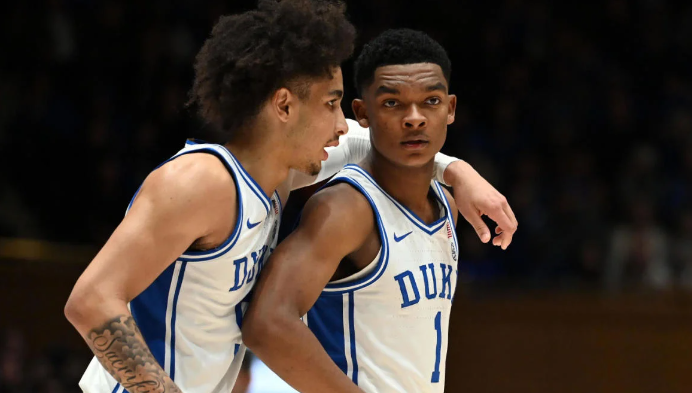Introduction
Conference realignment is shaking things up in college basketball as we head into the 2024-2025 season. If you’ve been following the college hoops scene, you’ve probably noticed the buzz about teams switching conferences. But what does all this really mean for the teams involved?
In simple terms, conference realignment is when college basketball teams change the league they compete in. This usually happens for a mix of reasons—better competition, more money, or just a chance to build new rivalries. For fans and teams alike, these changes can be a big deal. Imagine your favorite team moving to a conference with tougher opponents or more exciting games. It can mean a lot of things, from tougher games to bigger matchups and even changes in who you get to see them play.
For the 2024-2025 season, we’re seeing some major shifts. Teams are swapping conferences, and it’s not just about geography; it’s about strategy, finances, and future success. This introduction will break down what these moves mean, how they might affect the teams involved, and what fans should keep an eye on as we dive into this exciting new chapter. Stick with us as we explore the top takeaways from this conference shuffle and what it could mean for the future of college basketball.
Impact on Team Performance
When a college basketball team moves to a new conference, it’s not just about changing the name on their schedule. This shift can have a big impact on how well the team performs on the court. Let’s break down what this means in simple terms.
First up, adjusting to new competition levels. Imagine your team is used to playing against certain schools every season. Now, they’re facing new opponents with different strengths and weaknesses. This can be a huge change. For instance, if your team moves from a mid-major conference to one of the top leagues, they’ll be up against some of the best programs in the country. This can be a real challenge, but it can also push the team to improve and rise to the occasion. We’ll look at some examples of teams that have either struggled or thrived after making a similar move.
Next, let’s talk about recruiting strategies. Moving to a new conference can change how a team recruits players. They might need to adjust their pitch to attract top talent who are interested in playing at a higher level of competition or in a more prestigious league. A new conference can offer more exposure and better opportunities for players, so it can be a big selling point. We’ll dive into how teams might tweak their recruiting efforts to make the most of their new conference.
Overall, switching conferences is more than just a change of scenery—it’s a major factor that can shape a team’s performance, both in terms of immediate results and long-term success.
Financial Implications
When a college basketball team moves to a new conference, it’s not just about the game—it’s also about the money. Changing leagues can have significant financial effects for teams, and here’s how it breaks down in straightforward terms.
First, let’s talk about revenue changes. Different conferences come with different financial perks. For example, some leagues have bigger TV contracts, which means more money from media rights. Teams moving to a conference with a better media deal could see a boost in revenue from broadcasts. On the flip side, they might lose out if their new league doesn’t bring in as much cash from TV deals or sponsorships. We’ll look at how these shifts in revenue expectations can impact a team’s bottom line and what it means for their financial future.
Next up is budget adjustments. Switching conferences often means teams need to rethink their budgets. Travel costs can go up if the new conference has schools that are further away, and marketing expenses might increase as teams work to build their brand in a new league. This can also mean adjustments in how teams manage their money for things like team facilities, coaching staff, and other operational costs. We’ll explore how teams might need to tweak their budgets and what financial challenges or opportunities this move might bring.
In short, moving to a new conference isn’t just a change in competition—it’s also a major financial shift. Understanding these implications helps paint a clearer picture of what teams face as they make this transition.
Fan Engagement and Attendance
When a college basketball team shifts to a new conference, it’s more than just a change in opponents—it can also shake up how fans interact with the team and how many people show up to the games. Here’s what this means in everyday terms.
First, let’s discuss shifts in the fan base. Fans can be very loyal, and moving to a new conference might affect their enthusiasm. Some fans might be excited about the new rivalries and matchups, while others might feel less connected to the team’s new league. It’s a bit like when your favorite band changes their style—some fans will love it, and others might not. Teams will need to work hard to keep their current fans engaged and attract new ones. We’ll explore strategies teams can use to maintain or grow their fan base during this transition.
Next, let’s talk about attendance trends. A team’s move to a new conference can lead to changes in how many people show up to games. New conference matchups could bring in different crowds, either boosting attendance with exciting new rivals or potentially leading to lower numbers if the new games don’t generate the same buzz. Historical data can give us clues about how attendance has changed for other teams in similar situations. We’ll look at how these trends might play out and what teams can do to keep fans coming through the door.
Overall, a conference move affects more than just the scoreboard—it influences fan engagement and game attendance in significant ways. Understanding these dynamics can help teams navigate their new league while keeping their fan base excited and engaged.

Rivalries and Traditions
When a college basketball team moves to a new conference, it’s not just a change of scenery—it’s a big shake-up in the team’s rivalries and traditions. Here’s a closer look at what this means in everyday terms.
First, let’s talk about the loss of old rivalries. Many college basketball fans look forward to annual matchups against traditional rivals. These games are packed with history and excitement, and they often bring out the best in the teams and the loudest cheers from the stands. When a team switches conferences, they might lose these classic rivalries, which can be a real bummer for fans who love those intense, familiar games. We’ll dive into the emotional and competitive impact of losing these old matchups and how teams have managed this challenge in the past.
On the flip side, there’s the opportunity to build new rivalries. Moving to a new conference means new teams to face off against and new rivalries to spark. Teams have a chance to create fresh, exciting matchups that can become the next big thing for fans to get pumped about. We’ll explore how teams can build these new rivalries and traditions, and the role of media and fan engagement in making these new matchups just as thrilling as the old ones.
In essence, conference realignment brings a mix of saying goodbye to cherished rivalries and embracing the chance to create new ones. Understanding this shift helps fans and teams navigate the emotional and competitive changes that come with moving to a new league.
Coaching and Staff Adjustments
When a college basketball team moves to a new conference, it’s not just the players who have to adapt—coaches and staff also face significant changes. Here’s a breakdown of what this means in straightforward terms.
First, let’s talk about coaching adaptations. Coaches are the strategic brains behind the team, and moving to a new conference means they need to adjust their game plans and strategies. Every league has its own style of play, and what worked well in the old conference might not be as effective against new opponents. Coaches might need to tweak their tactics, study new teams more closely, and adapt to different styles of play. We’ll look at how coaches can navigate these changes and some examples of how other teams have adjusted their strategies during past realignments.
Next, there are the adjustments for staff and support staff. Coaches aren’t the only ones who have to adapt—everyone behind the scenes does too. This includes analysts who break down game footage, trainers who work with players, and administrative staff who handle logistics. Moving to a new conference can mean changes in how these staff members do their jobs and may require additional planning and coordination. We’ll explore how the roles and responsibilities of these staff members might shift and what impact this can have on the team’s overall operations.
In summary, a conference move requires significant adjustments from both coaches and staff. Understanding these changes helps paint a complete picture of what goes into transitioning to a new league and how teams can manage these shifts to stay competitive and successful.

Conclusion
As college basketball teams make the leap to new conferences for the 2024-2025 season, the impact of this change extends far beyond just the games on the court. This shift brings a mix of opportunities and challenges that can shape the future of teams, players, and fans. Let’s wrap up what we’ve discussed and look ahead to what’s coming.
To sum it up, conference realignment affects team performance in big ways. Teams face new competition, adjust their recruiting strategies, and adapt their game plans to fit their new league’s style. Financially, there are shifts in revenue and budget adjustments that teams must navigate carefully. Fan engagement and attendance can also change as teams build new rivalries and traditions while potentially losing old favorites. Coaches and staff need to adjust their strategies and roles to meet the demands of their new conference.
Looking forward, these changes offer a chance for teams to reinvent themselves and forge new paths to success. While there will be bumps along the way, the move to a new conference can bring fresh excitement and opportunities for growth.
As we head into the 2024-2025 season, keep an eye on how these transitions unfold and what new stories and rivalries emerge. It’s a thrilling time for college basketball, and the impact of conference realignment will be felt across the sport for years to come.




